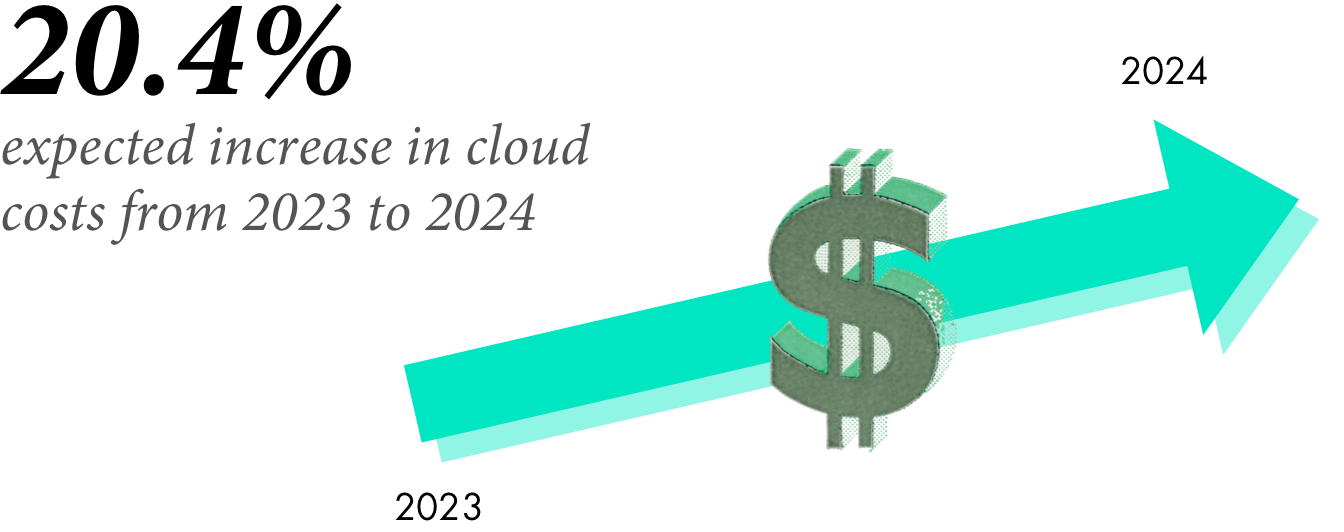Organizations moving to the cloud often assume their operational expense will automatically come down. This anticipation is driven by the alluring promise of cost-efficiency, scalability and elasticity. But without an in-depth understanding of different cloud cost units, meticulous planning and continuous cost monitoring, costs can exceed expectations without your organization knowing why.
Cloud FinOps, short for financial operations, is becoming a boardroom topic. According to a Gartner forecast, cloud costs are expected to rise 20.4 percent from 2023 to 2024,¹ directly affecting the bottom line. Our studies show that 64 percent of businesses with mature cloud programs cite cloud cost optimization as their top initiative, aiming to understand the cost breakout so they can control costs. Two in three CIOs in an IDC poll² said that cloud expenses exceeded budget, and more than half of CEOs expressed concern over unmanaged cloud costs.












